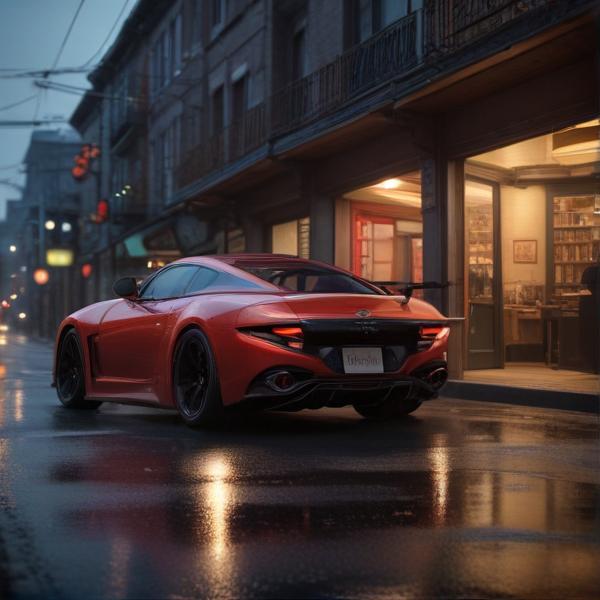基本信息 (Basic Information)
含义与用法 (Meanings & Usage)
中文核心释义 (Core Chinese Meaning): 车辆,用于运输的工具,一般指有轮子的交通工具。
英文核心释义 (Core English Meaning): vehicle, car; a wheeled means of transportation.
象形意义 / 为何这么写 (Pictographic Meaning / Writing Rationale)
文言文释义 (Classical Chinese Meaning)
与现代意义相近,在文言文中常指马车、战车等交通工具。Similar to modern meaning; in Classical Chinese, it often refers to chariots and carts used for transportation or warfare.
深入学习 (In-depth Study)
字源故事 (Origin Story)
字形演变 (Character Evolution)
常用词语和例句 (Common Words & Examples)
火车 (train)
我明天要坐火车去北京。
Eng: I will take the train to Beijing tomorrow.
汽车 (car, automobile)
他刚买了一辆新汽车。
Eng: He just bought a new car.
电车 (tram, trolleybus)
城市里有很多电车。
Eng: There are many trams in the city.
相关成语 (Related Idioms)
指鹿为马
Meaning: To call a stag a horse (deliberately misrepresenting the truth)
多语言翻译 (核心释义) (Translations (Core Meaning))
- French: véhicule, voiture
- German: Fahrzeug, Auto
- Spanish: vehículo, coche
- Italian: veicolo, auto
- Portuguese: veículo, carro
- Russian: транспортное средство, машина
- Arabic: مركبة، سيارة
- Persian: وسیله نقلیه، خودرو
- Dutch: voertuig, auto
- Polish: pojazd, samochód
- Vietnamese: phương tiện, xe
- Ukrainian: транспортний засіб, автомобіль
视频学习资源 (Video Learning Resources)
通过以下链接在热门视频网站搜索 "车" 的更多讲解:
Search for more explanations of "车" on popular video sites:
- 在 Bilibili.com 搜索 "车 字源 说文解字" (Search on Bilibili)
- 在 YouTube.com 搜索 "车 character origin etymology" (Search on YouTube)
网络参考 (Web References for "车") ()
网络内容摘要 (Web Content Summary):
核心含义与象形起源: "车"是指古代的车辆,包括车箱和轮子,是交通和运输的工具。这个字的形状最初像一辆车,有独特的象形来源,据说由夏朝的奚仲发明。Main Meaning & Pictographic Origin: "车" means vehicle or cart in Chinese, originally representing vehicles with wheels and used for transport or warfare. The character is pictographic, resembling the structure of a cart, and is said to have been invented by Xi Zhong during the Xia dynasty.
字形演变与文化背景: 车字早期字形较为复杂,会画出整体的车形,后来逐渐简化。它在青铜器铭文中有多种变体,显示出书写和文化的演变。古代不仅作名词,还可作动词“转动”。Evolution & Cultural Background: Early forms of the character "车" were more complex, often depicting the full shape of a vehicle. Over time, the form was simplified. The character can serve both as a noun (vehicle) and a verb (to rotate or turn), reflecting its historical and functional significance.
- 部首用法: "车"常作为偏旁,用于许多与交通、运输相关的汉字中,如“轿”、“辆”。 Radical Use: "车" is often used as a radical in characters related to transportation, e.g., "轿" (sedan), "辆" (vehicle, measure word for cars).
- 易混淆点: "车"在简体为“车”,繁体为“車”。容易与其他形似字(如“东”)混淆。 Common Confusions: The simplified form is "车", and the traditional is "車". It can be easily confused with similar-looking characters such as "东".
常用词语: 常见词语有“汽车”(car)、“火车”(train)、“车站”(station)、“车轮”(wheel)等。Common Words: Frequently used words include "汽车" (car), "火车" (train), "车站" (station), "车轮" (wheel), and more.
成语用法: 与“车”有关的成语有“车水马龙”(traffic in a busy street)、“车载斗量”(innumerable, in great quantity)等,体现了车在古代交通及文化生活中的地位。Idioms: Common idioms include "车水马龙" (busy traffic) and "车载斗量" (innumerable, a huge amount), reflecting the character’s importance in ancient transportation and culture.
总体评价: 上述信息较为充实,涵盖了车字的基本含义、结构演变、文化意义及常用用法。Overall Assessment: The above information is comprehensive, covering the character’s meaning, structural evolution, cultural relevance, and common uses.
【车,車,辄,輒,耴】的甲骨文金文篆文字形演变含义 - 甲骨文研究网 甲骨文密码字典 在线甲骨文字典研究 - 甲骨文研究网 甲骨文密码字典 ...
附 白话版《说文解字》:车,是古代对舆、轮的总称,即对名词的"车箱"、动词的"转动"都叫"车"。据说车是夏后时代叫奚仲的人创造的。字形像车的形状。所有与车相关的字,都采用"车"作边旁。 文言文名句摘抄 ①名词:有轮子、靠牛马驱动的战斗工具。
细说汉字:车 - 漢文化 - 通識 - 漢典
西周早期至中期车字仍继承繁体全形车字形体,但多省车箱,更有省一轮一箱而剩一轮作 者,如果此形省掉一辕一衡双轭,则作車,正与西周中晚期及春秋战国以后的车字同形了。在西周中晚期的师同鼎铭文中有全形的車和省形"車"字。
更多图片 (车 More Images) ()
